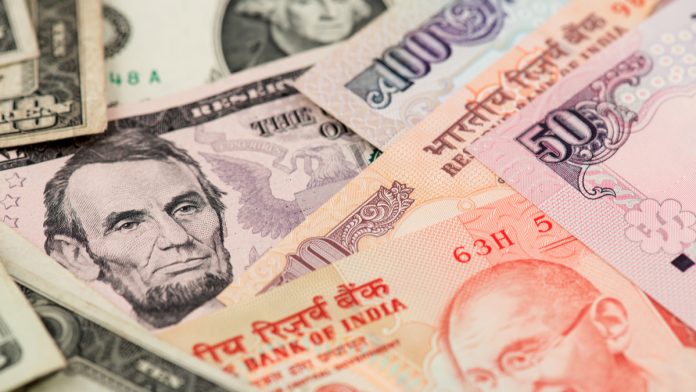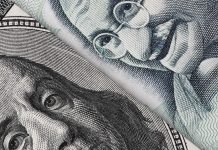- Indian Rupee (INR) falls for a second day
- JPMorgan see India posting strong growth in 2024
- US Dollar (USD) is rising on hawkish Fed bets
- US consumer confidence eases
The US Dollar Indian Rupee (USD/INR) exchange rate is rising for a second straight day. The pair rose 0.19% in the previous session, settling on Monday at 83.13. At 16:30 UTC, USD/INR trades +0.17% at 83.27 and trades in a range of 83.03 to 83.40.
The Indian rupee is coming under pressure in a risk-off mood in the financial markets, which hurt demand for riskier assets and currencies such as the Rupee
However, limiting the downside in sentiment were comments from JP Morgan, who said that they see India in its top three fastest-growing Asian markets in 2024, alongside Australia and Japan.
Asia’s third-largest economy is expected to grow 6.5% in the financial year ending March 31st.
The US Dollar is rising across the board. The US Dollar Index, which measures the greenback versus a basket of major currencies, trades +0.07% at the time of writing at 106.03, as it extends gains for a fourth straight session.
The US dollar is pushing higher and trades at a 10-month high against a basket of its major pairs. The U.S. dollar is being supported by expectations that the Federal Reserve will need to continue hiking interest rates at least one more time before the end of the year before easing less than initially expected next year.
According to Minneapolis Federal Reserve Bank president Neil Kashkari, there is a 40% chance that the Fed will need to raise rates meaningfully in order to beat inflation. Kashkari also said that there was a probability of about 60% that the Fed could raise rates one more time by 25 basis points and then hold borrowing costs at that elevated level for a reasonable period of time in order to ensure that inflation will fall back down to the Fed’s 2% target.
His hawkish comments have helped lift the US dollar despite weaker-than-expected consumer confidence. According to the latest Confederation Board, consumer confidence slipped to 103 in September, down from an upwardly revised 108.7 in August. Analysts had penciled in a decline to 105.5.





